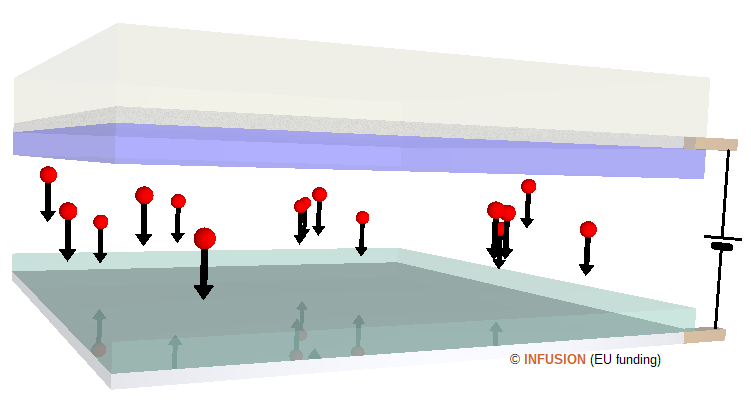Mirrors
The realization of self-darkening mirrors for rear view mirrors in automobile has been the first large-scale application of electrochromism. In an electrochromic mirror, the voltage bias applied to the device is controlled by a light sensor designed to detect bright glare from the headlights of cars in the back. To fade out the reflection light, the electrochromic layer of the mirror is switched to its colored stage, thus reducing the reflectance of the mirror. Otherwise, the electrochromic layer is kept in its transparent state, the mirrors work in a normal way.
 |
The opposite figures illustrates the operating principles of an electrochromic mirror. The electrochromic film is represented by the blue layer. It is covered on the top by a transparent conductive layer, itself protected by a glass plate. The green layer near the bottom schematizes an ion storage film deposited on a reflecting plate also acting as the second electrode of the device. The electrolyte separates the ion storage medium from the electrochromic layer. Possible materials are: WO3 for the electrochrome , LixV2O5 as the ion storage layer and LiAlF4 as electrolyte. De-insertion of the Li+ ions (red balls) from the electrochrome switches it back into its transparent state (bleaching). |